How Netflix Took the Christmas Movie to Its Logical, Campy Conclusion
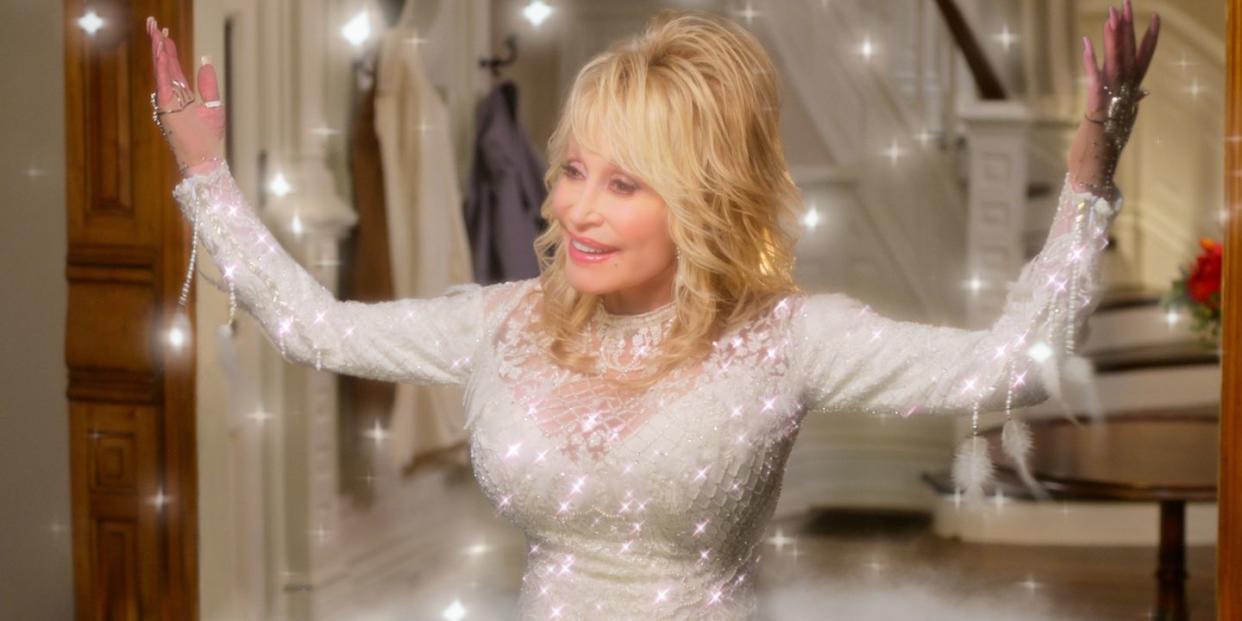
It's Christmas, and a mustachioed Keegan Michael-Key is leading a musical number in a green top hat and matching waistcoat. It's Christmas, and one Vanessa Hudgens is plotting to undo the other two Vanessa Hudgenses. It's Christmas, and Dolly Parton is floating on a small, glittering cloud.
With the arrival of Netflix’s latest holiday slate (including the sublime Jingle Jangle, The Princess Switch: Switched Again, and Dolly Parton's Christmas on the Square, referenced above), the Christmas movie has reached its logical endgame. Perhaps inevitably, over the decades, the classics like White Christmas and It’s a Wonderful Life were exposed to the pressure and heat of fandom, loved harder and harder each annual cable marathon, crystallizing into the sparkling essence of holiday cheer—and that essence is, essentially, camp.
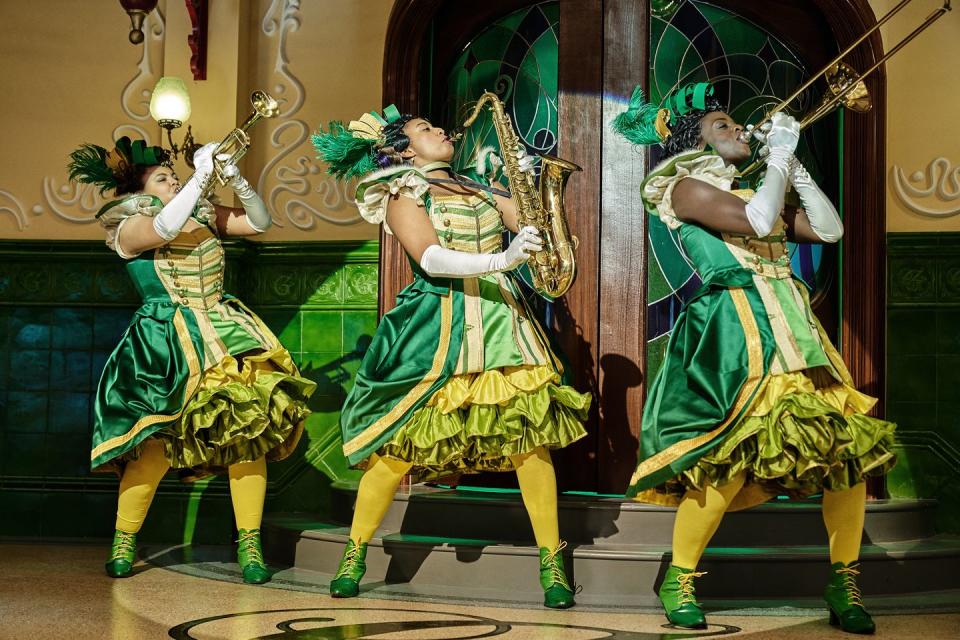
Christmas, as the semi-secular holiday—nay, season—that drives us as a culture to inflate garish lawn displays, load up dead trees with garlands and gold balls, wear themed sweaters, and encourage our children to sit in the laps of old men dressed in fur-edged velveteen suits at the mall, is inherently campy, in that it unironically embraces the excessive. (I’ll spare this article an in-depth analysis of the concept of camp or the Susan Sontag essay, lest I accidentally revive the Met Gala-inspired “this is camp” meme of 2019, but there are plenty of quality resources for those interested.) The chintzy Christmas look, out of context or out of season, would certainly be deemed in bad taste; perhaps the reason why some love it so much is that it gives them license to revel in an oft-forbidden exuberance, both aesthetically and emotionally.
It follows, then, that many of our more recent cherished holiday flicks feature an absurdist plot and indulgent costuming: 2000's Dr. Seuss’s The Grinch Stole Christmas stars Jim Carrey as a villainous green ball of hair; Elf has Will Ferrell as a hopelessly naive, elf-identifying human in a pointy hat and tights. Christmas movies don’t have to abide by any standards of rationality. Maybe if Cats had been more Christmassy, it would have actually worked—though those motion-capture felines would test even the holiday film’s boundaries.
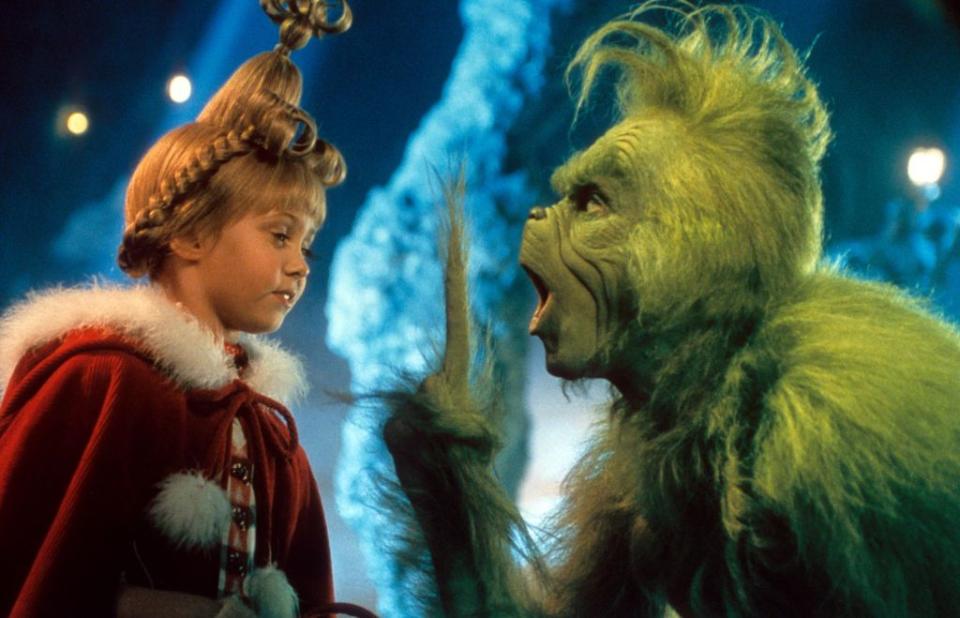
(These movies are also, essentially, non-religious; they worship at the altar of Santa Claus, not the baby in the manger. That isn't to say they're universal—plenty of people don't celebrate Christmas even in its most secular sense—or that all Christmas movies choose to skip over the holiday's Christian elements; Dolly Parton's certainly don't.)
But on top of the achievements of Elf and The Grinch, it was the addition of another strain of festive entertainment that paved the way for three Vanessa Hudgenses to convene on Christmas Eve: the Hallmark holiday movie. Drawing on the self-consciously nostalgic appeal of hits like Home Alone and A Christmas Story, as well as the heartfelt rom-com feel of The Holiday and Love, Actually, the channel has crafted an apparently irresistible recipe for yuletide fare over the past decade, pumping out formulaic, tinsel-lined plots with a speed and precision to rival that of Santa’s elves. (As Sarah Larson reports in the New Yorker, the films follow a strict nine-act structure, and are held to high brand standards: “We’re not afraid to look at the dailies and call them up and say, ‘Not enough Christmas,’” an executive explains.)
Every year, a new batch of freshly-baked content—featuring largely lily-white casts and almost exclusively straight characters—adds to an existing pile of small "C" conservative Christmas confections, to be indulged in 24/7 during a months-long block of airtime. The whole enterprise has become wildly successful, building a fanbase passionate enough to fill a convention—named, what else, Christmas Con—and broad enough to spur a dizzying rise in ratings.
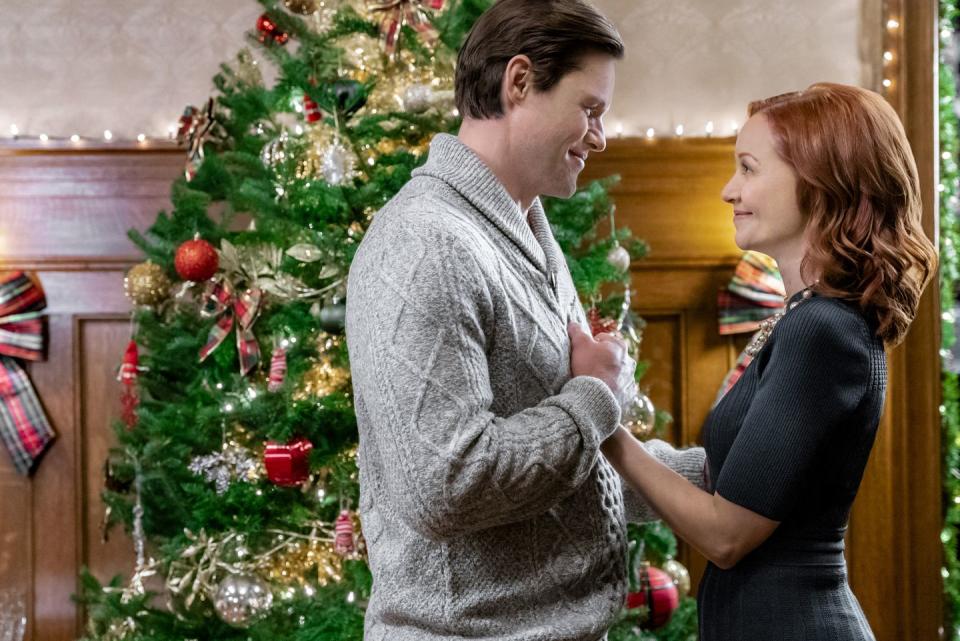
Rival network Lifetime has tried to replicate Hallmark’s coup, tweaking the recipe to add an extra sprinkle of adult themes. But it’s Netflix, with its deep pockets and access to star actors, that was uniquely positioned to combine Hallmark’s heartwarming, so-bad-it's-good blueprint with the excesses of Hollywood’s biggest Christmas hits. (The streaming service also has the unique ability to pump out unlimited content while recommending only what its algorithm thinks you’ll like—making it easy to overlook its subpar, more Hallmark-aligned fare, and focus on Dolly floating on a cloud.)
The magic of the Netflix holiday flick is not that it's created something entirely new (Christmas on the Square isn't even the first Christmas movie starring Dolly Parton as an angel) but rather that it pushes these ideas to their absolute limit (Parton's portable mini-cloud was a nice touch, and casting Christine Baranski as a bah-humbug-style heroine was a stroke of genius). It stuffs Jingle Jangle with so much jewel-toned, vaguely Victorian production design that it seems primed to burst—not unlike Keegan Michael-Key's ill-designed "wirly twirly." It adds an extra Vanessa Hudgens to an existing movie about two Vanessa Hudgenses—a Christmas miracle if there ever was one. May the next holiday season be even campier than this one.
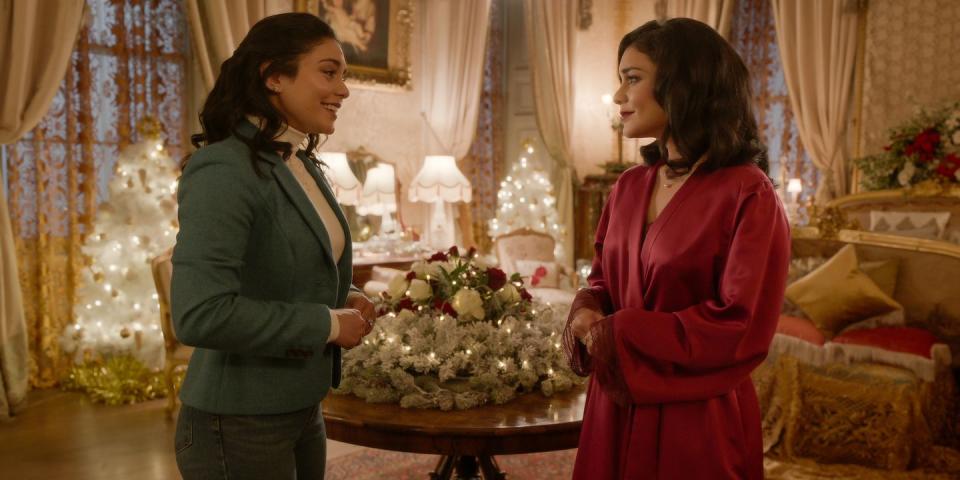
You Might Also Like

